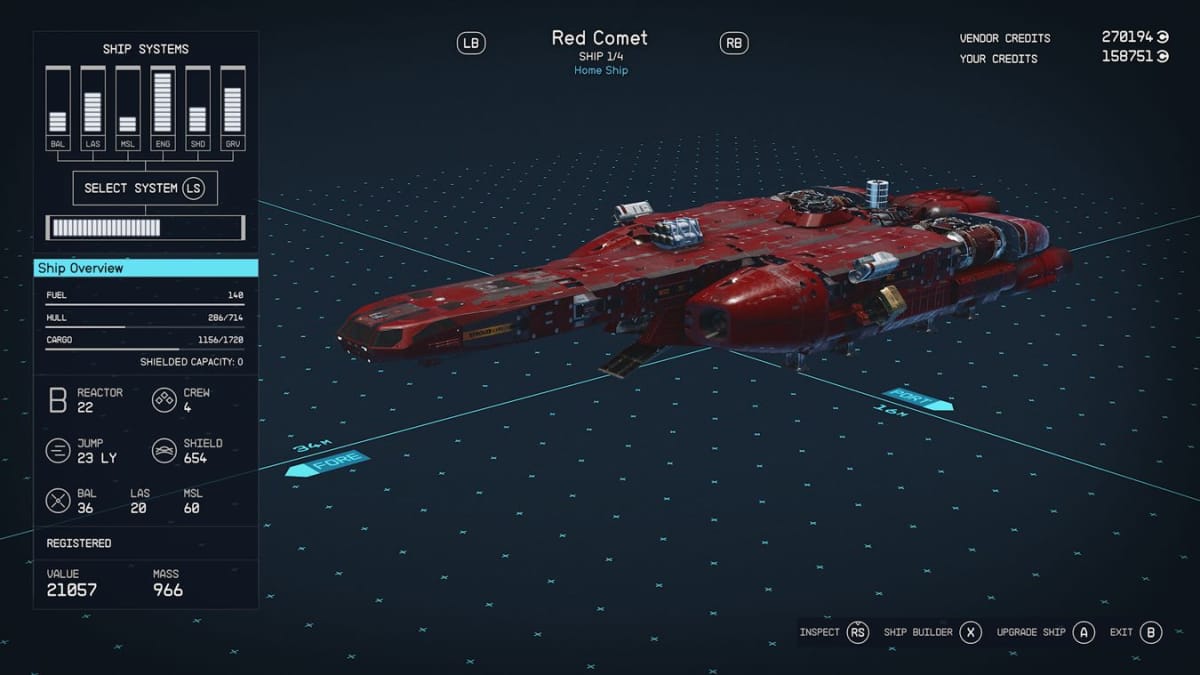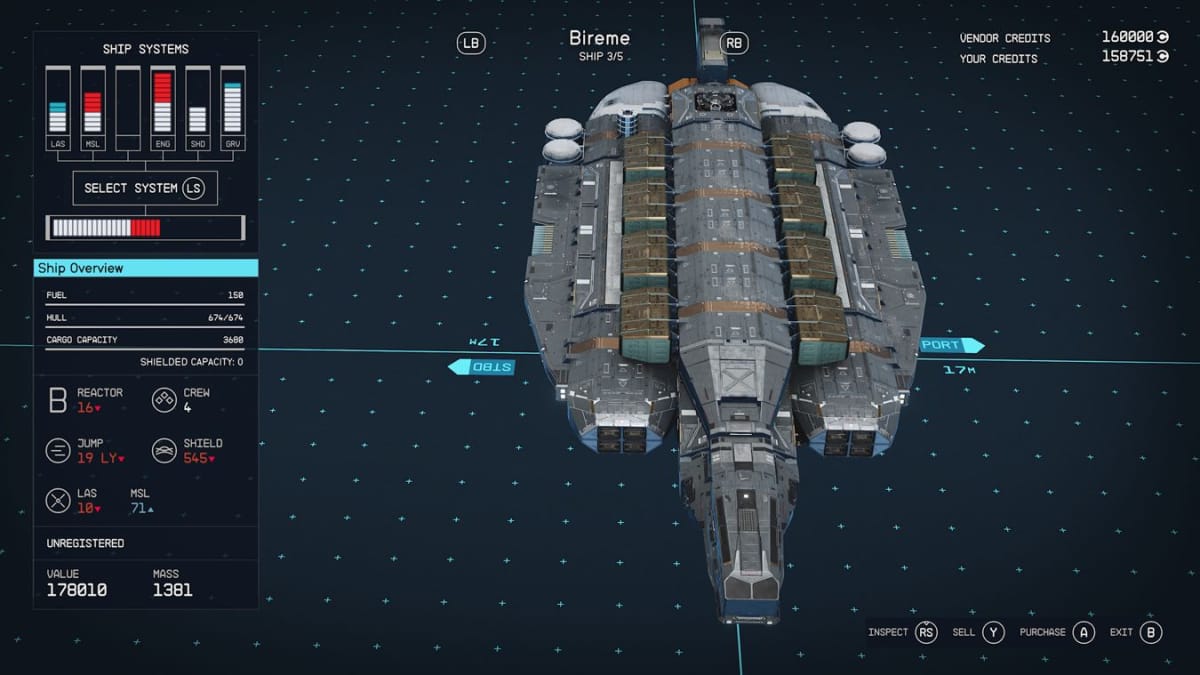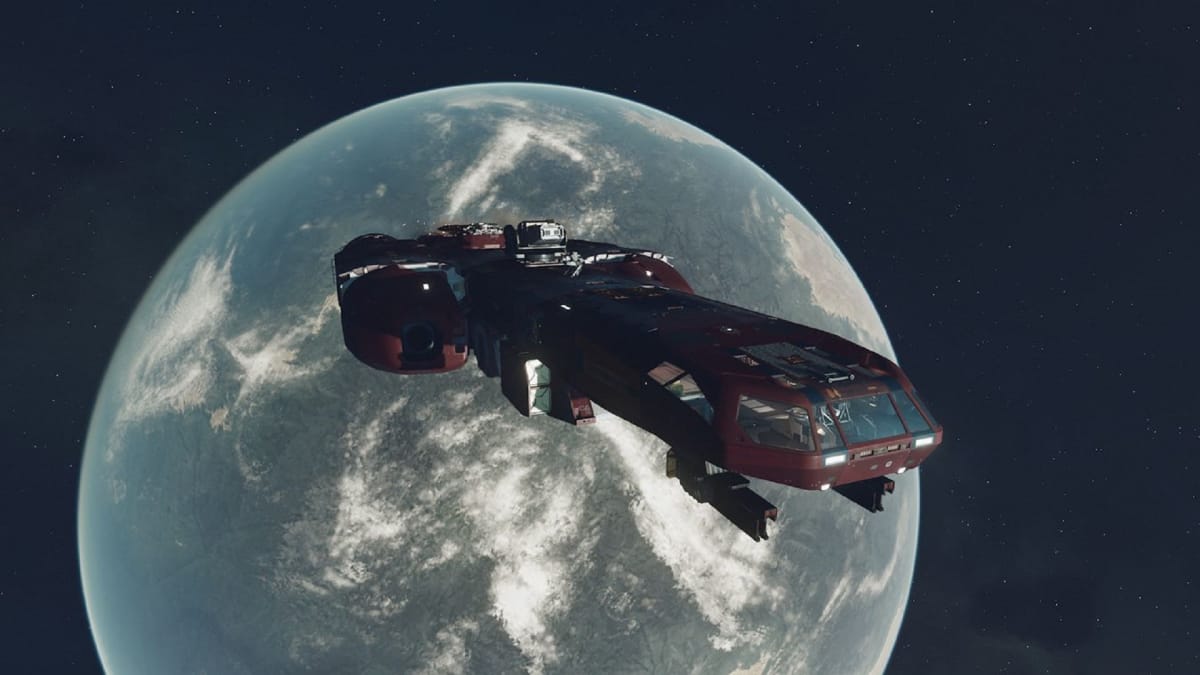Anyone who is familiar with Bethesda's open-world RPGs will tell you that although there is a nearly limitless amount of content available to you, only a fraction of that content can be considered meaningful once you finish all the major questlines. After all, no one expects anyone to actually explore every cave in Skyrim or loot every single building in Fallout 4.
Most people will probably finish the main quest, a couple of their preferred faction's questlines, whatever miscellaneous tasks they encounter along the way, and then consider the game to be done. Starfield is no exception, but the addition of the shipbuilding mechanic does add a bit of an endgame to encourage people to keep playing afterwards.
Of course, Starfield is a story-driven action RPG, so how can such a game have an endgame once the story is done? Bethesda's answer is seemingly to give you total creative freedom to build any kind of spaceship that you want. It sounds like a silly solution, yet it fits perfectly with the kind of games that Bethesda specializes in.
Starfield's Shipbuilding Is Surprisingly Addicting
We must first consider the basic mechanics behind Starfield's shipbuilding. Customization by itself is already a popular feature in any modern game. Judging by how lucrative in-game cosmetics can be, people love being able to change the skin of a gun or character. Going by that line of thought, it's a no brainer that a space game should allow for custom spaceships. Starfield takes this concept one step further by letting you build that spaceship from scratch.
There are some restrictions, mostly related to size and a few mandatory components. However, the manner in which these components are arranged is entirely up to you as long as they connect to each other. This kind of creative freedom and customization is very much designed to let players spend countless hours perfecting their designs, much like how one could spend hours theory crafting and min-maxing their character builds in other games.

That Starfield's ship components are designed to be modular is yet another creative blessing. Clipping is surprisingly rare, so there's no reason not to mix and match. With all the parts available in game, there are an infinite amount of unique designs that are available to you.
You could make a real-world comparison by looking at the popularity of LEGO sets, Gundam model kits, Warhammer minifigures, or any other hobby that encourages people to turn mass-produced hunks of plastic into a unique display of personal ingenuity. Ironically, Starfield's shipbuilder does have more restrictions in that you can't cut, glue, or otherwise manipulate the individual components of a ship.
The aspect that pushes Starfield's shipbuilding into endgame content territory is almost certainly going to be the cost associated with it though. Class C components regularly cost tens of thousands of credits, not to mention the skill points needed to unlock these components to begin with. Then there's the fact that many of the non-decorative components are hidden until you hit certain level thresholds too.
Fortunately, Bethesda's ship gameplay loop is implemented in a far more satisfactory manner than their outpost system. For starters, you can easily obtain credits by playing the game normally. Upgraded ships are also practically mandatory for certain quests.
If you want to roleplay as a pirate or a space trucker, you're going to need a good ship as well. Even explorers would need some form of defense in the event of an ambush, so it pays off to periodically upgrade your ship components, especially if you're planning on going to high-level star systems.

The result would be that it always feels like you're building up to your ultimate ship the entire game with upgrades that matter. Your ship can thus be considered a second player character, albeit one that is only usable for certain encounters. The only thing that's missing are encounters that push your piloting skills and your ship to the absolute limit.
What Could the Future Hold for Starfield's Shipbuilding?
That being said, Starfield's current shipbuilding system could be expanded outside of simply adding larger space battles. If Bethesda wants to go in a more creative or exploration focused direction for endgame or postgame content, more unique ship components would be an obvious direction. They could also let players create larger and more specialized ships such as carriers to function as a mobile home and garage.
Regardless, it's hardly an exaggeration to claim that Starfield's shipbuilding is a natural extension of Bethesda's game design philosophy. The idea of giving the player customizable property has been present ever since Skyrim's Hearthfire DLC, but it is only with Starfield that the property could be built from the ground up. You couldn't shoot people with your Skyrim house either, so Starfield's flying houses are unquestionably more interactive.
As it stands, Starfield's shipbuilder is an excellent tool that has room for expansion, official or otherwise. Without it, Starfield might've ended up as just another Bethesda game. If random social media posts are any indicator, the shipbuilder is Starfield's most popular mechanic by a huge margin. Evidently, it seems that allowing players to not only be creative, but to allow that creativity to take digital form, is the way to go when it comes to single-player action RPGs.
Have a tip, or want to point out something we missed? Leave a Comment or e-mail us at tips@techraptor.net













